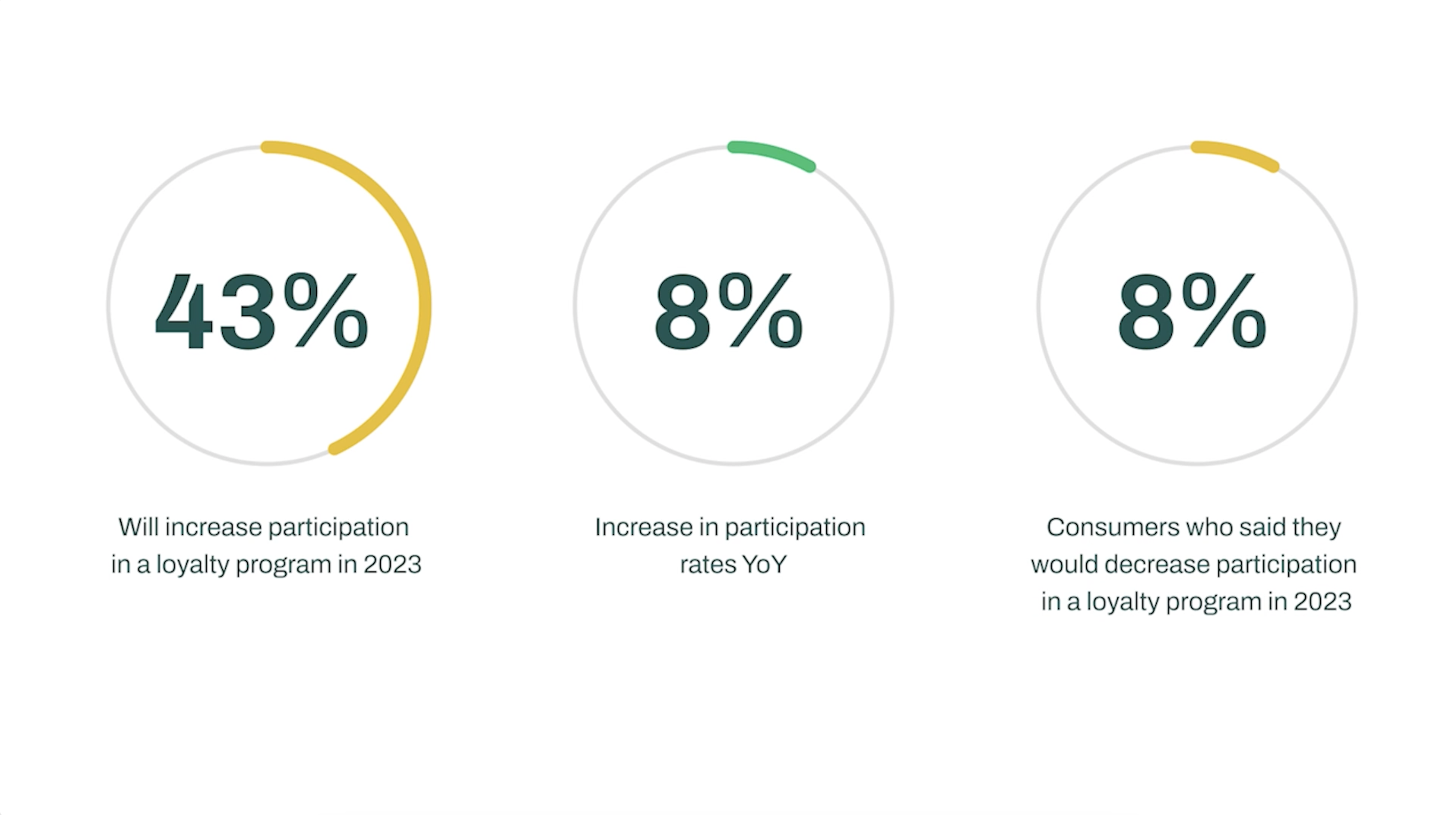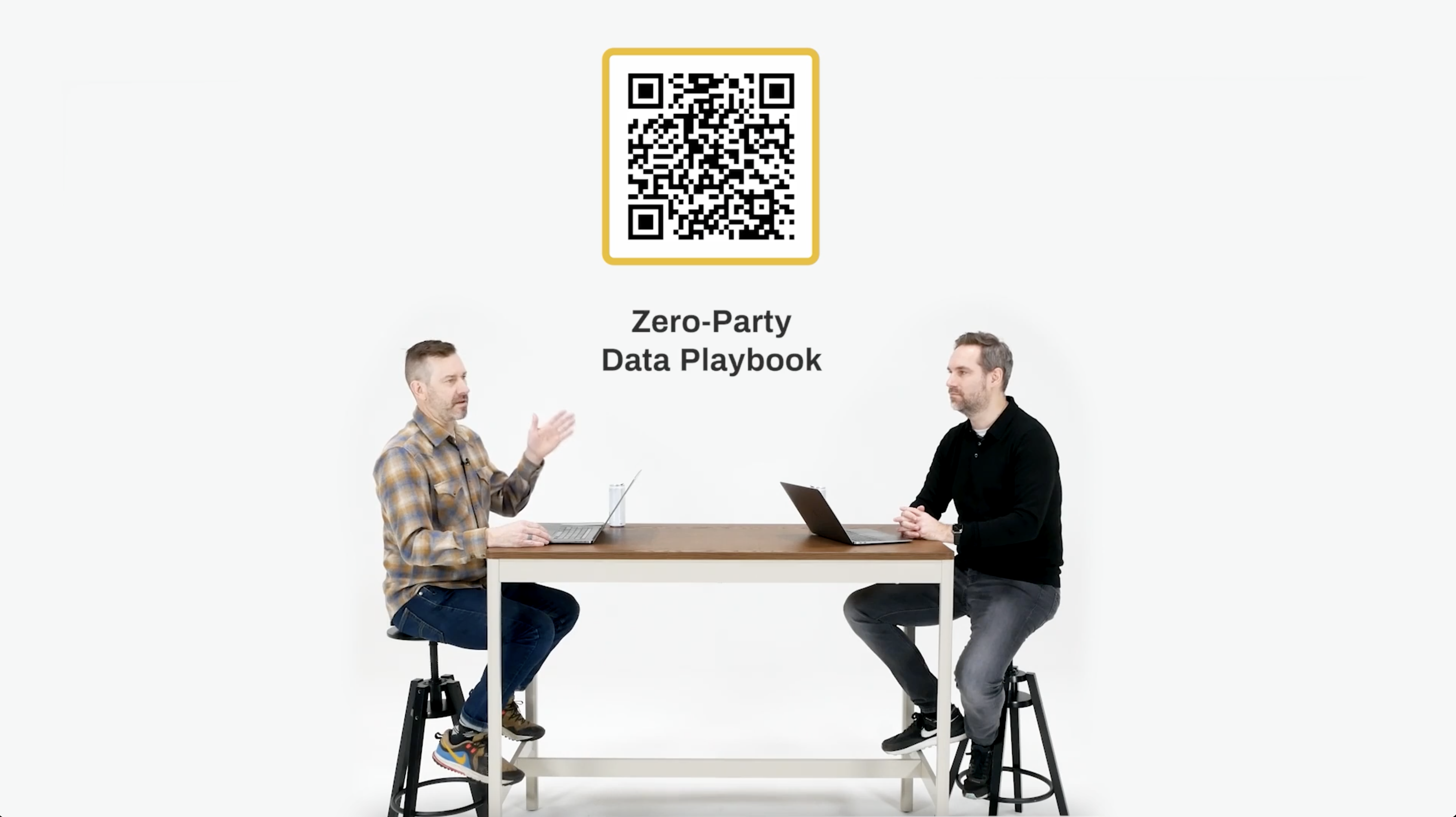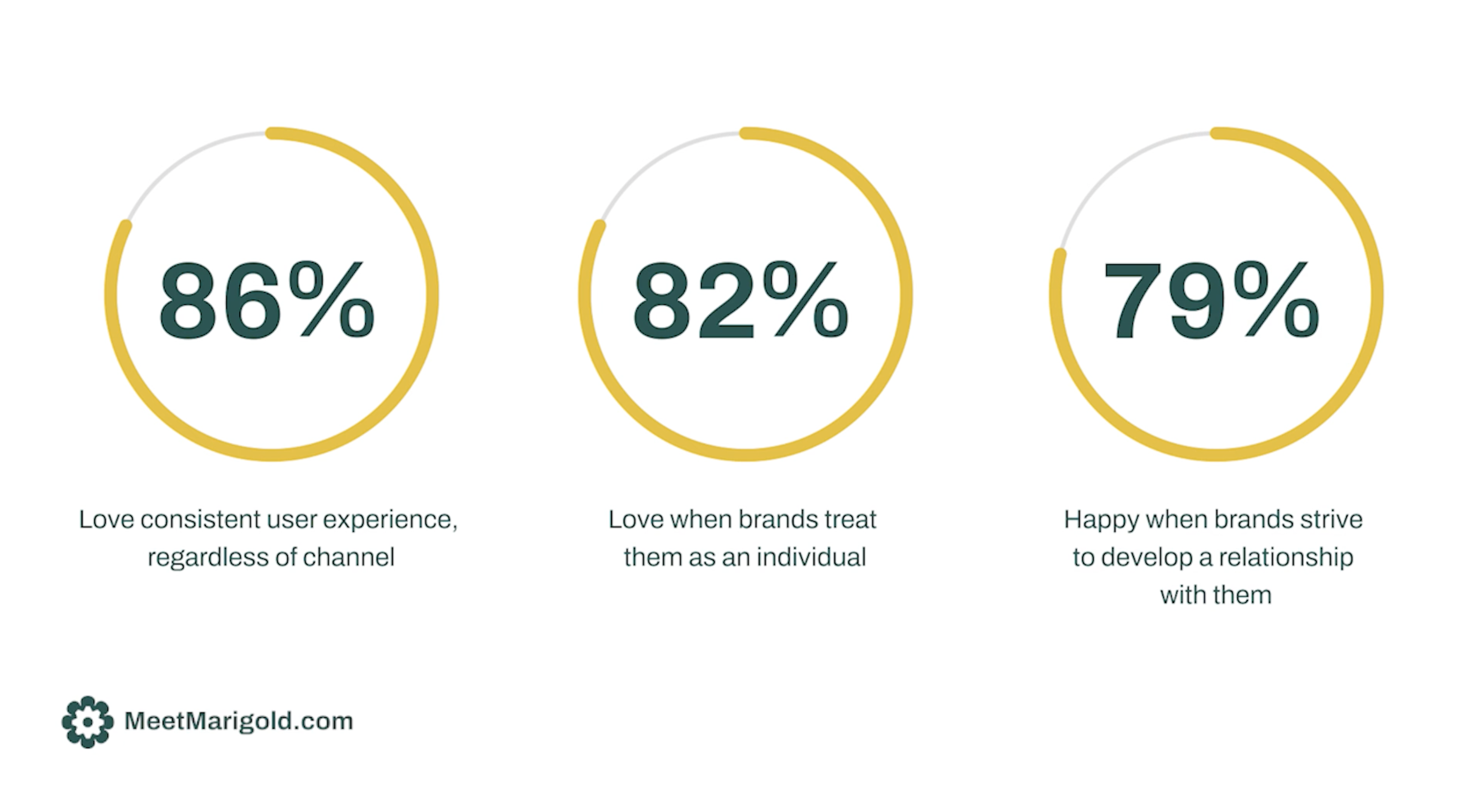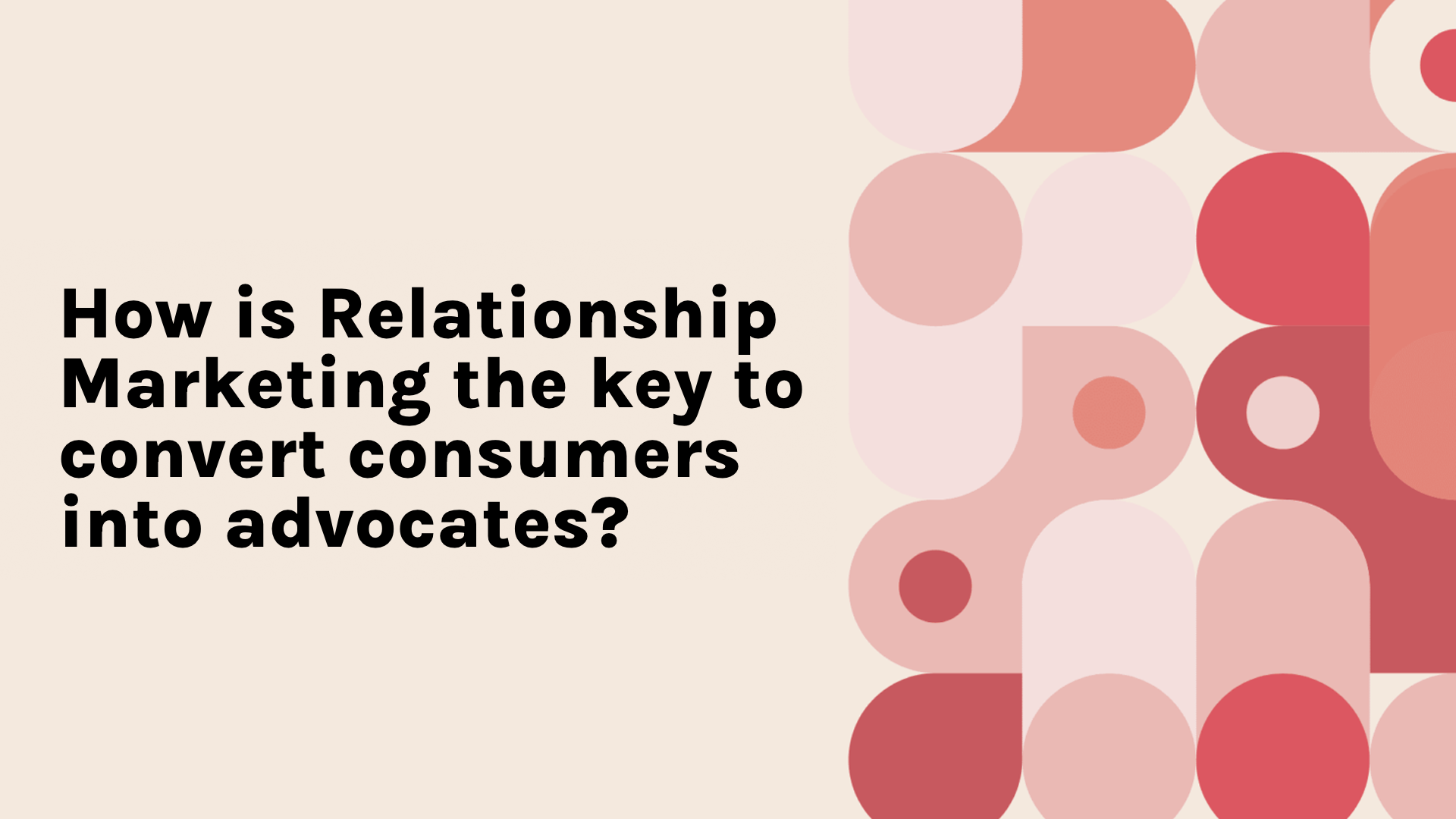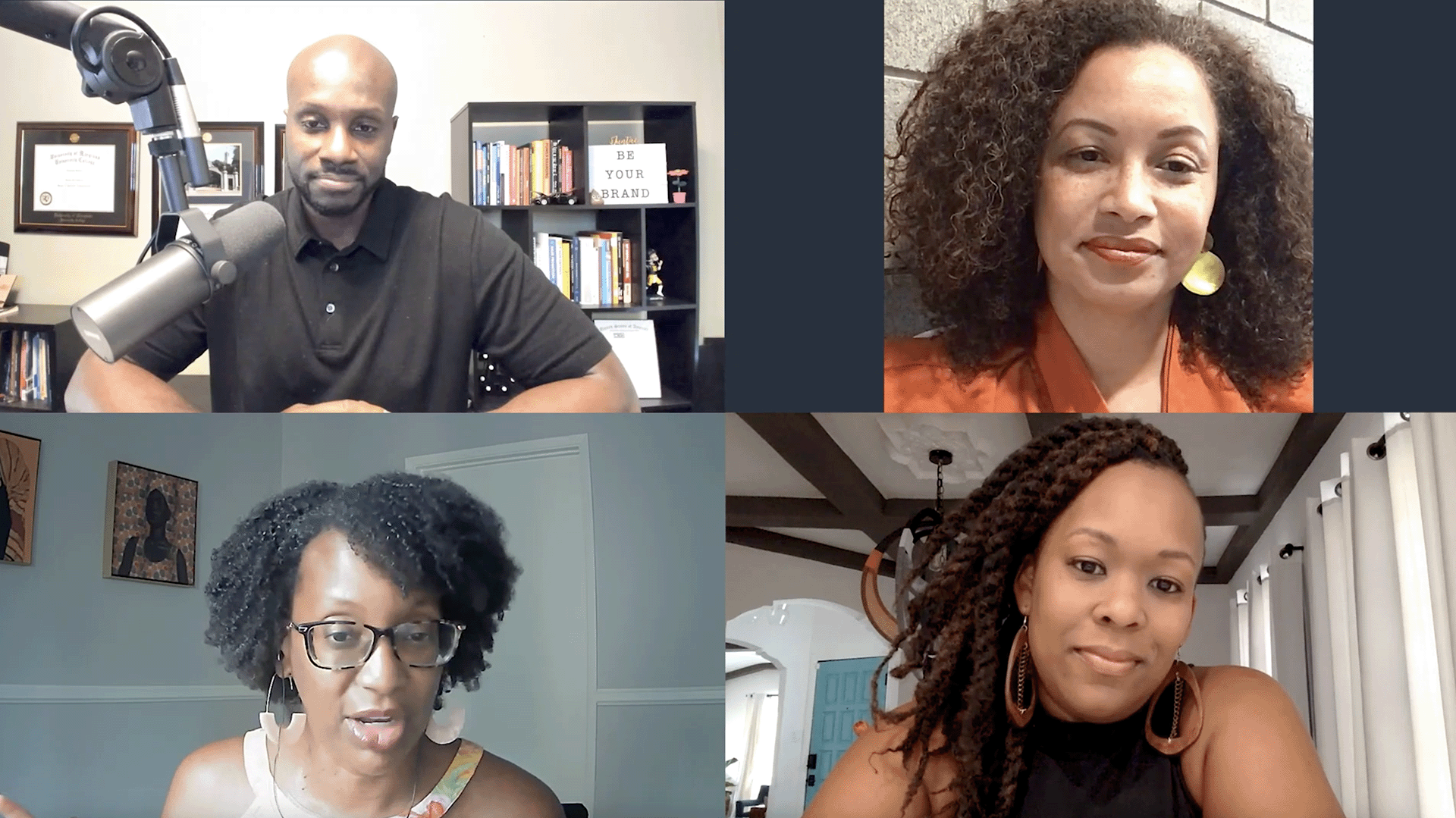How CPG/FMCG brands are successfully unlocking direct-to-consumer relationships
- 0.5
- 1
- 1.25
- 1.5
- 1.75
- 2
Julian: What's up?
Kayla: What's up?
Julian: Yo, what is up Kayla?
Kayla: Not much Julian, just watching Signals and having a tub. What's up with you?
Julian: Nothing much either, watching Signals, having a mug.
Kayla: True, true.
Julian: Got milk over there? I'm running out.
Bruce Swann: What's up?
Julian: What's up?
Kayla: What's up?
Julian: What is up, Bruce?
Bruce Swann: Nothing. Watching Signals, wanted to plug.
Kayla: Oh, yeah? What are you wanting to plug?
Bruce Swann: In about 23 minutes, join myself and Julian as we talk to Umberto, the CSO and co- founder at Silverbullet, and talk about how marketers can use data to drive actionable insights and deliver smarter outcomes.
Kayla: Ah, that's great. Fits in nicely with the conversation we're about to have at Hill's Pet, mainly about how marketing technology and data has empowered CPG brands to establish direct to consumer relationships.
Julian: It's almost like we planed this. Where's the beef?
Kayla: Beef? Well, there isn't any. But we have planned this really well. All right, Bruce. When you get ready for your session, we should get into our familiar animated form, because we're worth it.
Bruce Swann: Cool, looking forward to it. See you soon.
Julian: Signals 20 animations, they're great. Let's get on with today's practitioner session, shall we? Who have we got up first?
Kayla: All right. So, kicking off our CPG practitioner panel, it's the Global Digital Strategy lead at Hill's Pet. Keith, would you please introduce yourself to our audience?
Keith Lehman: Sure. Hi everybody, my name is Keith Lehman. I'm Hill's Pet Nutrition, Global Digital Lead. And so across the world, I'm responsible for the online experience for our pet parents and our pet professionals. My role is both strategy and then executional guides.
Julian: How big is Hill's Pet?
Keith Lehman: It's a big beast. Yeah. So, Hill's has been in business for nearly 70 years. We are actually a subsidiary of Colgate. So if you've heard of us, you probably haven't heard Hill's the master brand, but you've heard Science Diet or Prescription Diet. You've either seen it on your pet store shelf or your veterinarian, when you go into clinic for your checkups, we're usually on shelf there.
Julian: But you mentioned pet parents and pet professionals, are they your two big audiences that you're thinking about when it comes to the work that you guys are doing?
Keith Lehman: Yeah. So, those are two very, very distinct and very specific segments that we look at. The pet parents are going to be you and me, right? And the love that we have for our cats and dogs, we share an affinity. And we also look at our pet professionals as those that recommend our brand that understand the science behind what we do. And so, the message is tailored to each audience set, and where we look to engage them. And we're obsessed with this idea of the gravity of a notion where we're pulling them closer to us. And in doing so, we understand the messages that really resonate with them and the mechanics and the life journeys that they're going through. So, we're really super obsessed with the data, but also our intellectual or emotional intelligence on what message will work the best, and what are people really wanting out of a brand? I think those are the distinct areas that we're looking at on a day- to- day basis that make their overall strategy.
Julian: When we're thinking about CPG and pets, Keith, what struck me is how lots of the everyday produce that we pick up, like soap or beans, we will do a little bit of research, I'm sure, we might just have habits. But when it comes to the pets, they actually take the next level of interest for people. Don't they? People take that all very serious, and you've mentioned the emotional connection and the work that you guys do there. Does that make life extremely interesting.
Keith Lehman: First of all, backing up, you hit a great point. CPGs, when you think about them, and even when I went in and came into this role, I'm thinking pet, food, consumer packaged goods, I thought it was mis- categorized. But there's a huge passion for pets, pet culture. There's a lot of it. I mean, there is a real, you don't go," Oh, God. I love my soap. I can't wait till I get to the shelves at my local grocery store." But pet food is important and almost nearly more important than people are getting with the food that they're putting in their mouths. Pets are small kids now. Feeding them correctly is so utterly important. And for us to be a very large player in that category, we have to have fun. We obviously have to encourage an even more impactful relationship between pet parents and pets, but we also take it very seriously. I mean, this could be life or death for a pet, and that's a family member. And we have a very strong reputation, and we like to uphold it because we love pets.
Kayla: Regarding the data strategy, can you kind of help us understand? Like in the past 12 months, what projects have you been working on to help pull in more data from your consumers?
Keith Lehman: Sure. Yeah. We're actually, admittedly, we were on this journey before COVID. And so we are, across the globe, onboarding a more complete holistic CRM strategy. And so, we're working with a specific partner, and to be honest with you, being in global and for all of you that are in global, it is an interesting world because everybody has their own philosophies and their own ways of handling their local business. And so for us, from a global capacity, trying to articulate a larger data idea and why it's so important, and then going into these regions and these smaller countries and seeing what data they have, it's like the worst garage fall cleaning that you've ever done. You're finding data in the little small pockets, it's opted in and it's not opted in. You've got GDPR you're dealing with in Europe, you've got a lot of data standards with privacy, these are important elements that we're not quick to ignore. We have to have governance, and we have to have all of this. So, we're cleaning house basically. And for good reason, right? We've got pet's parents that are utterly important to our business. And so, what we're doing is starting to map what their journeys look like against what messaging that we're pushing through. Getting them on tracks and automating our business, so to speak. And then, we're also looking at the tracks of professionals, and we've got partners and we've got shelters out there. And we've got so many different audience members that we have to, fundamentally, it is an expectation from all users, right? That the brands that are out there, the businesses I do business with, they understand me, they know who I am and what I'm doing and they need to know my expectation. And so, for us to be pulling in data from a global footprint, and then to understand at the individual level, macro to micro, is so important for us. And so, we're going on a data journey, we're cleaning house, and we're starting to revitalize what our messaging looks like in a more automated way, but also with that taste of personalization. And then from another aspect, our professional journey is starting to get revamped, too. We've got that pet parent, but then we also have veterinarians, and college professors, and vet clinics that are doing business and have that really strong technological education and all of this background. And so, our messages are tailored differently to them, right? We need to know that they're interested in grain- free, or they're interested in new product types, different forms. Those are oddly important. But we're finding that the journeys that we put them on become disparate. And so, what we're doing is collapsing, and looking at more of a user centric type of strategy and role for Hill's. And we're starting to pull all the tools that we have together, give them a complete redesign, pull in the data, and make sure technology works together. And so, it's not really building this new thing, but it's taking a new approach of," Let's get inside of their minds. Let's walk a day in their shoes, and let's go through the experience and instead of being a barrier, break them down." And so, the experience is just the light bulb, right? It's something that you look forward to.
Julian: How did you guys start from a strategic point of view? Do you look for certain data points in every country that you go," Actually, we know what pet they have, that's a good starting point. We know what food they're on, that's a good starting point." With the data cleansing you're doing, where do you even begin?
Keith Lehman: We begin with what we have, right? And so right now, it is based off of the region. It's based off the country. And honestly, you start with a baseline of what you believe that you're going to have. We're all going to probably opt- in with the same amount of data. Progressive profiling is going to be one of the most important things. We learned this from LinkedIn, right? All of us have gone through LinkedIn and probably have 102% profile completion because you couldn't just bear to be at 98%, You had to continue to add that in. And where we start is just that baseline of knowing who you are at the individual level. And let's just start there, because we want the consumer, and we want the pet parent, and whoever is our audience to trust, we want the relationship to be there. So, I think gone are the days where you can anticipate you throwing a 20 field form in front of somebody, and then trust that they'll just fill it in and just give you the data. Data is becoming more valuable than the dollar or the pound. It is currency at this stage, right? And so, we have to earn privilege to get to this data. And so, I think asking for a little bit of information, and then the more that their relationship becomes down the road, if you want to get more data, that is, I think the strategy that we're looking towards. It is less normalized because not all countries and regions, especially if they're governed by different rules, are going to allow everything to be put into place. But we're going to build an architecture to house it, no matter what. And then, we'll start working on the journey and strategies to get and gain that type of information. And it's not because we just want to know everything. I think we're all, as marketers, we're all in tune with this idea that we want to know them to make their experience better. We want the message to be more particular, more specific for who they are. We want it to resonate. And that's the idea. I hope deeply down that's the ethical ambition, is we want to make marketing a better experience for everybody, not just own all of the data and know everything. And I think that's our responsibility, is to make sure that one we're asking for it, the trust is there. And if it's not, go earn it. And once you get that data, utilize it for the good of the relationship and the experience, as opposed to reselling it or putting it in different spaces that don't make sense.
Julian: Perhaps you guys are a little bit further down the road in thinking when it comes to your approach because of the nature of pets, as you said already, they're so important that you really have to understand pet owners and what they care about in a way that other CPG brands can be a bit more flippant. Do you feel like you're quite established, though, in this space where understanding your consumers is the most important thing Because let's face it, the industry as a whole has often shunted it to being," Well, we'll build the product and we'll make some nice advertising and then they can find it for themselves in a retail store or shop, or maybe online through a third seller." They never really had that direct relationship.
Keith Lehman: None of us have that option anymore, right? We're living in a really... Let's take inventory, real quick. Cookies are dying, we're not going to be able to do third- party sharing a lot of the time. People are flocking to the internet at historic levels and it's not going to slow down, and they're expecting brands to stand out from each other. So, what option do we have? We cannot rely on Facebook and Google anymore for the large, third- party data. We have to establish more of a creative way and utilize our emotional intelligence to utilize that message and get in front of people, and really flex our muscles in terms of the spaces that we were actually good at. And for us, we live pet culture and we love what our audience loves. And to a degree, you can use data and you can use this information to understand all of the who, where, and why's. But the color of the walls or the emotional, the way that you portray your brand, those are going to come from here and here, in the hearts and minds of our marketers to our audiences. And that's what we're going to try to win over. You can only go so far with your data and understanding who is resonating well with it, but you use data to kind of directionally steer your marketing strategy. And then, you use your data to say it worked or not. But everywhere in between, I think you have to go out and have those conversations. You have to be in tune with the calls that are coming in, the posts that people are saying about how happy or how mad they are with your product or your service. Those are all of the, we'll call it data if you want to, but these are people behind the data. That's the fine line, I think, we need to be very, very careful about. Where we cross that line of people becoming just a number, or we're putting a number to a heart and a mind that that has preference, and that stands for something. I think we can't lose sight of that, especially how digital we're getting and considering how disconnected we are.
Kayla: So, with the fact that you're not always directly with the consumer, sometimes they're buying it off the store shelf, et cetera, how do you capture that data? Or is there anything that you guys are looking into to be able to identify those consumers at the store?
Keith Lehman: I think social is a way for us to really hone in on that. Our audience is very vocal in social media, and frankly so. If pet culture goes alongside of meme culture, and it is all about the cat and dog videos, it's just utterly easy to share all of the great stories. Whether it'd be just the transformation story of your dog who was diagnosed with some type of cancer or some type of kidney issues, and some of your nutrition that helped bring them and revive them back. Those are the stories that we hint up to. In terms of purchase data, we get purchase data everywhere, and we work just like every other CPG with the big players to understand," What does fulfillment look like?" I mean, for the most part, we do the traditional brand studies, and we do the path to purchase investments. So, we understand what tactics are resonating to get them to the purchase area. But for the most part, what you're looking for is good, solid partnerships with your retailers to ensure that you're tying your great campaign data and the investment areas that you're looking at. And you're repurposing them, and you're really optimizing them with your partners. The transparency is not always there. I think we all feel that. We would love to get more data from them to understand where and how and why are we as a brand differentiating from the other competitors that are there. But for the most part, we use a lot of proxies and we'll utilize social data to help us understand what the consumer is looking for. And plus, we're fulfilling all of the inventory, so we know what's moving. We know what product is the favorites, if you will. But for the most part, having those day- to- day conversations with people, not only your consumers, but your vet partners, your retailers, your e- commerce giants, having lucrative and very meaningful conversations with them is what we're about. It's got to be a culture of transparency for us. We're not lacking in the data category for sure. If anything, we're lacking in that people that can work through the data and get the insights from it.
Julian: Campaigns as well, more of the mechanics. But I guess you have to broach all of the different ways that people can consume them now, from offers, through partner offers, in store, on pack stuff, or just pushing people to the website on digital properties, where they get more brand affinity. Do you have any of that strategy work in your team working out sort of the physical and the digital?
Keith Lehman: That's a really great question. And again, another topic that we could just dive into wholeheartedly for the day. We have, first of all, a culture of testing. And so, we love looking at new mediums and we love getting new products from Facebook and Google and Instagram, and seeing what we can do with them. Because pets and dogs and cats are so dynamic and so versatile, you can really expose and have really great content that resonates and resembles the relationships that pets and parents have. So, we look for inspiration in different spaces, right? We look for inspiration from Facebook, from Instagram. We look at creators. We struggle a little bit because it's a global strategy. And what we try to do is make something that can be reused across, because if we utilize something only for one region or one country, what really good is it? So, we look to make something that can be evergreen. When we first started with our content journey, probably about five or six years ago, we identified everyone was getting on National Cat Day and Mother's Day and Father's Day and all these days, but we were creating all this content that could be used for one day of the year. Right? So, how do you actually create a content strategy that we can create something and then send out to the rest of the globe they can use any month, any day, any week. We started to capitalize on the infotainment area, where all of the content was starting to resonate with not only the technical aspect, but also," This is a boring subject and you guys make it fun. And you know what you're talking about." And that's where I think the cornerstone is. That's where we started to intersect because our content was starting to evolve. It was starting to become more about the pet culture and the relationship, as opposed to just pet nutrition. And that helped open up a lot of different ideas of," Well, when people are searching for this content, when people are reading through it, it's helping us understand what people are interested in most." One of the biggest articles that we had last year," Why is my dog sitting on me?" Who knew? Right? But that happens a lot. And people research information like that." Why can't dogs eat chocolate? Why are dogs eating grass? How do I clean my cat's ears?" Things like that, that are about pet care and the important elements. That's what we started to articulate in our content strategy, and that it can be re- utilized across the globe for everybody because it's a universal element. And so, that's where we started to find more of a corner in the market, if you will, against our competitors. Because we were evaluating our content in a more meaningful way.
Julian: Looking at the data journey, which is saying that you guys said you were completely separate from the other CPG brand. Right now, we're at the clean house, spring clean phase, where there's lots of data. Now we need to work out what to do with it and how it could be optimized. That is then fueling the next key thing, that's the messaging and personalization. At the end of that, how do you formalize, or is there even a need to formalize a loyalty type program? Would you look to move these individuals who you now are communicating on a personalized level, into a more formalized loyalty structure?
Keith Lehman: Let's step aside beside the CPG world for a second, if you don't have a loyalty program, you're probably going to be left in the dust. We're expecting, and it's table stakes now at this point, but now everyone flocking to online and roadside and all of this, this different element of being in business. I think you have to have a sticking point that's a little bit different than the other competitor down the road. We have to stand out. I think just a consumer message that's going to resonate is one thing, but having value in the relationship is going to be another. I think the loyalty program that has a tangibility of how lucrative my relationship is with a brand is vitally important. People are looking for that. At the end of the day, they're looking for something to hold onto. And for brand, I think that emotional connection can only go so far. Having a loyalty program not only, I think, from a brand level helps a brand to take inventory of all the important elements, what's the value proposition of what they're doing, really looking inside themselves and looking to redefine their brand a little bit more so than just pushing out messaging and spraying and praying, et cetera. But the consumer is looking for something that they can look to that says," Wow, look at this pile of value that I have in this brand. This is why I'm going to go back. This is why I'm not even going to research other elements, because at the end of the day, I know that I have a great product. And I know that they're rewarding me for being loyal." Loyalty is just an invaluable metric that I think is another wave, right? We've got social listening, we've got insights built out of search, all of this stuff. I think the next iteration is figuring out how to really categorize and to measure loyalty.
Kayla: What marketing channel do you think is the most underrated?
Keith Lehman: The guy that you hire at the corner with a sign that's spins? No, I'm just kidding.
Julian: crosstalk I'd put that as a headline.
Keith Lehman: I think in- store digital is probably one of the most underrated. I think that the retailers that you see utilizing it are so dynamic in the presentation styles and the ability to optimize. McDonald's, for a good example, everything's digitized. I bet they didn't have as hard a time with all of the traditional retailers that do planograms and have to swap out paper and everything. They just changed what inventory was available and to what messaging. And if you think about it, if we could have more interactive in- store digital elements, it would help us get more educated as we're... You guys have been in the aisle recently, I'm hoping, you're looking for customer reviews. You're looking for a way to engage. I would love to see where offline and online meet, literally where you can engage the most and you can dig further, and you can look at reviews, and you can look at their competition, and you can see all of these things, and to be more educated in your purchase decision. I think that's the more underrated. And we have to figure that out. We as the retailers are going to have to figure this out. And for us, as brands, how to help them get there. Because just the traditional print material that we were wasting, first of all, from an eco- friendly perspective, I feel like we have this massive opportunity there to create something of an online, in- store experience that's so much more robust than it is.
Kayla: Which technology or trend are you most excited about for the coming months?
Keith Lehman: I have a little ambition around AR. I love augmented reality. I love where it's going. I follow a lot of AR stuff. The beauty of following it is just the inspirational element that it brings, because it's so creative in the way that people are utilizing it. Taking a snapshot of your dog who is overweight or obese, they give me a glimpse or picture of what he should look like. I think those are elements that helps inspire and get the creative juices running. These things help people, not only of how they're utilizing it, but when they're utilizing your product, what is the outcome? What does it look like? How do I benefit from utilizing your product? Augmented reality is, I think, something that brands should be looking at. We tried and dipped into virtual reality, but AR I think is where you can take the realness of what you have around you and apply what your product can do as a value to see what the outcome would look like.
Julian: I couldn't ask for anymore. So, thank you very much.
Keith Lehman: Cool. Really?
Kayla: So good.
Julian: Yeah.
Keith Lehman: I hope it was helpful for the masses. And you guys were brilliant at interviewing, so great job.
Julian: Thank you, Keith. Not sure if our cartoon forms express this, but both Kayla and I are blushing right now. David Frost and Barbara Walters ain't got nothing on us.
Kayla: Quite the compliment. Thank you so much for your amazing insights there, Keith. So Julian, are you giving me the rest of the session off then?
Julian: Yes, Kayla. I am, as this is literally the halfway point of our Signals practitioner series. You deserve a break, kick back, get a warm mug of something, and maybe return to that tub of ice cream, if it's not melted.
Kayla: All right. I'm going to head out, see you guys later.
Julian: Okay. For the second- half proceedings, let's bring back the brilliant Bruce Swann.
Bruce Swann: Hello, Julian. Loving being here, and I especially like my new form.
Julian: Very handsome, indeed. Bruce, are you ready to talk to our next guest?
Bruce Swann: Very ready and really looking forward to it.
Julian: To kick off, could you start by introducing yourself and the great work that you do and Silverbullet are doing, generally?
Umberto Torrielli: Sure, hi. Thanks for having me. My name is Umberto Torrielli. I'm the co- founder and Chief Strategy Officer of Silverbullet Group. We are a product and services business for the new marketing age defined by first party data and post cookie solutions. Essentially, you could think of us as an empowerment for businesses to deliver their marketing better, faster and smarter through the application of smart technology.
Bruce Swann: With regards to a data strategy, what kind of conversations have you been having with marketers and brands? And how has it changed in the past six to 12 months?
Umberto Torrielli: Yeah, that's a really good question. So, essentially at Silverbullet, we basically specialize with regards to supporting our clients with crafting data strategy, selection of the right technologies, implementation of those technologies, and then supporting the ongoing services of those technologies. And so, essentially we're at the forefront of that question and it comes up all the time. But I would say the last six to 12 months, COVID issues aside, the conversation has been squarely around the evolution of technology and the shift from what were technologies that rely heavily on third- party cookies and other forms of ID that are just basically going away in the near future, towards what types of technologies can I now use as a business, as a brand, that can basically help you circumvent some of these issues that are coming down the pipe. There's an obvious reason for that line of questioning. It's all about the investments that were made in technologies years ago, big investments. In some cases, they've kind of returned ROI and that's great, in lots of cases, they haven't. And so again, the question is," Well, where do I spend my money next?" And obviously, money and investments generally being something that I think businesses today with the current pressures are very keen to kind of be smart in the way they're spending, in essence. I think it's paramount for those businesses to really try and understand where should they invest their technology budgets, and where should they invest their marketing budgets. And then, how is it all translating to a data strategy that is cohesive?
Bruce Swann: What should brands start thinking about when they need to put first- party data front and center and wean themselves off of third- party data?
Umberto Torrielli: So, I think there are varied solutions in market today that actually helped mitigate that problem, in different ways. Personally, I think that third- party data outside of the US was never very effective. There was always a volume problem. There was always a quality problem. It worked in finite use cases, but generally speaking, third party data was never something that a brand, especially in Europe, needed to rely on solely. Having said that, like I said, I think today there are technologies out there that really can help brands, regardless of their industry or vertical that they're in, creates and generate more first party data. And that first party data can come from different areas, and I'm sure we'll get into it later, but that first party data effectively can be used in ways that weren't really applicable several years ago, or were perhaps secondary thoughts because there was such a heavy reliance on third party data. So, there's lots of really smart ways that you can leverage first party data into, for example, in programmatic using contextual translation to be able to inform programmatic first- party campaigns with first- party data, but in an environment that is cookie- less and compliant, and so forth. Likewise, there are platforms out there that we partner with that help generate critical volumes and quality of first- party data for our clients through various mechanisms, through experiences, through events, through various types of sponsorships. But then, likewise, through social log- in platforms and the consent driven first- party data that can be gathered from social platforms and through those devices. So, there are a number of different ways that we support our clients today in terms of helping mitigate that. And my last thought on this is that in some ways where we're going today in a world that is not going to be so reliant on third-part, cookies is a world where actually some of the data points we can kind of rely on are far better, and far more qualified than third- party data ever was. And I'm talking about things like context or other proxies for what someone might be interested in, or perhaps intent on buying. Those types of mechanisms are far more deterministic than third- party data ever could be. Because if you're reading an article about a car and it's a review, chances are you like that car, and chances are in that moment, you're the person that's actually reading that article. As opposed to a third- party cookie or a third- party dataset based off of third party cookie off someone's laptop that read an article three weeks ago. And then the wife comes on, she gets targeted with the car ad. That never really worked well. So, I think that's where we're going. And those are some of the mechanisms that are in place today to help kind of mitigate some of those issues.
Bruce Swann: A lot of brands talk about having a customer- centric strategy or developing a customer- centric strategy. And we had a speaker during our Signals event, Shar VanBoskirk, an analyst from Forrester who writes and often presents about brands becoming customer obsessed, which is truly about putting the customer at the center of everything a brand does. So, tell me a little bit about what role you think data plays in helping a brand build out a customer obsessed strategy.
Umberto Torrielli: Yeah, I think data is the fundamental building block there, right? I mean, you can't be customer centric or customer obsessed if you don't know anything about your customer. In our world, obviously in our industry, knowing your customer is built on data, and first- party data specifically. So, the reality is in order to be a customer centric business, you have to have information on your customer that is obviously compliant and consent driven, et cetera, et cetera. But ultimately you need to be able to build an accurate picture and profile of your customer wants, desires, needs, et cetera, in order to talk to them in the right way. Because ultimately, the way you then transform or translate that customer centric view or mission into actionable, tangible results is by speaking and communicating to your customer at the right time and the right place with the right message, based on what's important to them. I think that's what, as an industry, we've just not been really good at. I mean, there are obviously outliers, there are brands that have done a great job. There are campaigns that have been under the spotlight and highlighted, and have won awards, and so on and so forth. But as a whole, I would say our industry hasn't really done a great job of really communicating at the right time, right place, the right message to customers. So I think, again, going back to your question then, in order to be a customer- centric business, you need to have the right amount of information, first- party data on your customer. Otherwise, it's a bit of a moot point.
Bruce Swann: Marketers still struggle with segmentation, personalization, and analytics. And these are capabilities and requirements that have been around for quite some time. Why do they still struggle with these things?
Umberto Torrielli: That's a really good question. On one hand, I think that it's not fair to marketers, in the sense that they are hit with dozens and dozens of new technologies on a monthly, yearly basis. And there's new stuff on the block every single time anyone opens their inbox. And so, that begs the question of," Well, how do I know what's actually important to me as a brand? What's actually going to work. What's not? Why should I trust this vendor over the other vendor?" Of course, there's been consolidation into various marketing cloud stacks, and so on and so forth. But the reality is there's still so many products out there that LUMAscape is not getting any simpler. If anything, when you look at the LUMAscape, it's even worse. So, from a brand perspective, it's really confusing. That's what it is. It's just a confusing, complex, almost catastrophic scenario when trying to pick the right technology. And so, you know inherently that you need to rely on things like analytics and understand," Well, it's beyond just a CTR, as a metric." When you're looking at your campaign, you need to start looking at engagement metrics, and time spent on site, and what is the ad in view, and all the things that actually sort of matter from a marketeer perspective. But then, what do you use to actually measure that? Again, there's just so much choice. So, I think it's a difficult one to tackle because ultimately, you know what you need at a high level, but you just don't know what to use because there's just so much choice. And so it's up to us really. And to be completely honest, that's kind of the premise behind why Silverbullet was created to begin with, specifically with regards to data technology and data platforms. We felt that there was a moment in time, four years ago, four and a half years ago now, I guess, where we had the ability to come in and help educate the industry around these specific technologies, and helping them make the right decisions around what to choose and what not to choose based on their very specific use cases. And there was no one right answer. Obviously it comes down to industry, geo, market, technologies in place, use cases, company mission, et cetera, et cetera, et cetera. And then from there, you can build the picture of what is the right technology to adopt. But that's the bottom line. I think it's a really confusing landscape. It's not getting any clearer. It just takes us to help educate brands, marketers, publishers alike as to what's going to work best for them and ask that question around segmentation and personalization analytics. Why is that so hard? I'm going to ask that because those topics have been around for a while and those needs have been around for a while. And I've been in the industry a while. And it's interesting, when I started, I worked with a small tech company that had a marketing database at the heart of its offering. And at that time, there wasn't a notion of first, second, third party data. It was just a marketing database where in it, you had data about your customers. And then, as this digital world evolved, that's where marketers couldn't keep up. There's data in CDPs. So, where do you do your segmentation, in the marketing database or the CDP or both, and how do you share? And new channels come online all the time. So, it disrupts what the marketer is trying to do, and their best intentions. So, yeah. Anyways, I appreciate your perspective on that.
Julian: How can CPG brands start to establish deeper relationships with the people who are buying their products? And obviously, within mind that many CPG brands are in a strange position that people are buying multiple products on a regular basis.
Umberto Torrielli: Again, I think that the answer varies greatly depending on the market that you work in. Because depending on the market you work in, and there are different legislations, for example, in place. It would perhaps preclude you from being able, as a brand, from able to understand and have a direct touch point with a customer. I think about liquor brands in the US. You can't sell directly to consumer, you have to look through a distributor, right? So right there, you introduce an extra link in the process, which makes it even more complicated to gather the data. On the other hand, in some countries like the UK, some liquor brands for example, can sell direct to consumer with their pubs that they own, right? So, it does depend on the market. I think ultimately though, you have to set out to create a strategy that works for you in that market. And it allows you to understand as much as you can from your consumer where you have access to the consumer directly. So again, we're going back to the idea of generating experiences, contests, touchpoints, and whatever it is that can engage the customer and prompt them to want to give up some information about themselves. And again, that can be done either directly via, as we said earlier, forms or questions, or what have you. But by the same token, I think I alluded to this earlier, but there are technologies out there that also allow you to by consent driven mechanisms. Logging by social login, and therefore basically giving your consent to provide the first party data of your interest in what you like and so on and so forth to the brand, in return for something. Whether that's a sweepstake, whether it's a prize, whether that's an entry into something raffle, whether it's just a personalized experience, whatever it is. But those are some of the ways that we support our brands with regards to engaging and creating a strategy that can drive first party data. And then, there's always the good old methodology of actually trying to understand your consumer by creating an advertising strategy that is very specific, that talks to the types of context environments and interests that your consumers may have. And based on the conversions you have there, you can also start to learn a bit more about your customer and then ultimately segment their journey. And orchestrate their journey, to use that word, in a way that makes sense to them, talks to them. Again, going back to what we said at the top of the hour, the more you provide the correct message at the right time, right place for a customer, the more likely they're going to be satisfied with your brand and therefore more willing to provide information about themselves. Because I'm sure none of us here want to see the old Punch the Monkey ads, right? The generic, from back in the nineties or whatever, early nineties, late nineties, or two thousands, banners about Punch the Monkey, and mortgage people dancing, and so on. No one wants to see that, right? And yet, I find myself despite I have no ad- blockers, you can target me all you want, I still see a bunch of ads where when I browse the web that are irrelevant to me. That erodes my trust as a consumer. So, it all comes down to gain trust, being customer- centric, having the technology to orchestrate that journey. And therefore, making me as a consumer, more willing to give up my data in return for more a customized journey.
Bruce Swann: So, consumers can engage with a brand, a CPG brand really, whenever and however they want. Whether it's walking into a store, or on their mobile device, or their laptop, just a multitude of ways to engage. How can a brand think about providing not just personalized experiences, but consistent experiences? Which we all know is important, as it helps build trust, provides a nice, cohesive experience from one moment to the next. So what are a couple of things brands can think about to provide consistent experiences in this omni- channel world that we live in?
Umberto Torrielli: Yeah. So, I mean, ultimately you need the right technology to actually be able to enact on that strategy, right? Without the right tools and platforms in place, you just physically can't do that. But it all starts with a smart, modern segmentation strategy. Because ultimately that's what we're doing, right? We're segmenting your customers by various types of customers. It goes way beyond the old view of," Maybe there's five types of customers." There's not, there's like a million types of customers. We all have very different ways of, of engaging with brands, and our devices, and different situations at home, and at work, and so on and so forth. So, you can't just bucket people into five buckets and hope that it's going to work, right? You have to literally personalize everything on a one-to- one basis, as much as that's possible by technology. But in order to do that, again, that starts with segmenting those customers by those categories or by those types of communications. And then, trying as best as you can to, again, orchestrate that journey based on what you know of your customer, in terms of what is the typical cycle that a customer goes through when they buy your product. And that's going to vary, probably, by customer, individually, and by product within your own portfolio. So, it's really complicated. And again, I don't think that today's technology, there's not one thing that can do it all, for sure. But you have to start somewhere. And there is enough technology out there today whereby, with the right strategy, the right segmentation strategy, and the right communications. Because again, let's not forget that you can have an amazing segmentation strategy, you can understand Joe from John at the end of the street, and the fact that Joe buys Dove and John buys whatever other brand of soap. But then if you give them the same creative, you've lost that. You've completely ruined the opportunity, right? So, you have to have the right creative, the right strategy, the right context, the right platforms, and the right segmentation, in order to think about how are you going to approach that very issue. Maybe one day we'll have a platform that does it all, but I think it just can get more and more complicated. So, hopefully, we're here as technology platforms, as service providers, and as educators of this industry to help kind of guide as best as we can through the mess that is the AdMarTech world and LUMAscape.
Julian: Wow. Thank you, Umberto. Bruce, that was quite something. Great insights and a brilliant way to round out our discussion on consumer packaged goods.
Bruce Swann: Yeah, that was excellent.
Julian: Bruce, congratulations, by the way, on hosting a really excellent set of sessions during data- driven engagement week.
Bruce Swann: Thanks to everyone who watched it and enjoyed it. And thank you, Julian and Kayla for having me on your CPG session.
Julian: Anytime, Bruce. And on that note, joining myself and Kayla next time around as we discuss travel and hospitality with our friends from Cayman Airways and Hilton Hotels. See you soon.
Voice Over: Signals 20, the content series for marketing rock stars.
DESCRIPTION
In recent years, most Consumer Packaged Goods/Fast-Moving Consumer Goods (CPG/FMCG) brands have embarked on large-scale digital transformation projects to identify and understand who is buying their products. As a result, marketers in this industry often have large amounts of data at their disposal. The challenge then centers around being able to act on these insights to improve customer interactions.
In this 'animated' client panel, Julian Bracey-Davis and Kayla Siegmeier speak with Keith Lehman, Global Digital Strategy Lead, Hill's Pet.
- Hills Pet products are sold in over 40 countries
- Hill’s Pet focus on two primary audiences; pet parents and pet professionals
- Hill's Pet Nutrition generates $2.2B in revenue annually
Today's Guests

CSO, Silverbullet



